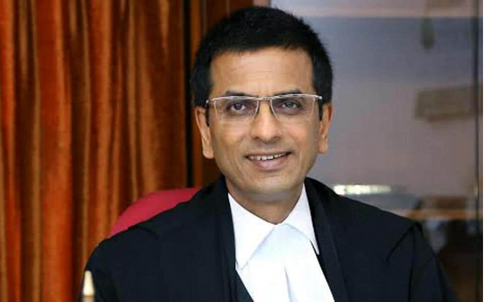“The basic structure of our Constitution, like the northstar, guides and gives certain direction to the interpreters and implementers of the constitution when the path ahead is convoluted,” said Chief Justice of India DY Chandrachud. The basic structure doctrine was laid down by the Supreme Court in the 1973 Kesavananda Bharati case. Saturday’s statement by the CJI is the latest in the series of volleys being exchanged between the executive and the judiciary.
While the executive is represented by Vice President Jagdeep Dhankhar, Lok Sabha Speaker Om Birla and Union Law Minister Kiren Rijiju, the judiciary is defended by CJI Chandrachud and his brother judges. The saga started with Rijiju and Dhankhar questioning the legality and legitimacy of Collegeum system in appointment of judges of Supreme Court and High Courts. They even questioned the validity of the doctrine of basic structure.
The CJI has explained “the basic structure or the philosophy of Constitution is promised on the supremacy of the Constitution, rule of law, separation of powers, judicial review, secularism, federalism, freedom and the dignity of individual and the unity and integrity of the nation.”
That this was said by Justice Chandrachud as part of Nani Palkhiwala Memorial Lecture in Mumbai is all the more important. The CJI said “Nani told us that our Constitution has a certain identity which cannot be altered.”
The CJI has said enough. For now. He left nobody in doubt. The occasion was timely and appropriate. Nani Palkhiwala was representing Swamy Kesavananda Bharati when the latter filed a writ petition in the Supreme Court challenging 1969 land reforms as implemented in Kerala. This case led to the Supreme Court’s landmark decision that outlined the basic structure of the Constitution under which Parliament had the authority to amend the Constitution but not to disturb its basic structure or foundational principles.
Dhankhar described striking down of the National Judicial Appointments Commission (NJAC) Act by the Supreme Court as “severe compromise” of parliamentary sovereignty and disregard of the “mandate of the people.” He also said the Parliament being the custodian of the “ordainment of the people,” was duty-bound to “address the issue” and expressed confidence that “it will do so.”
Almost nine years of BJP rule has made it clear that the rulers want to change some aspects of the basic structure of the Constitution as well as the polity. They are bent upon negating secularism, diluting federalism, jeopardising separation of powers and denying freedom. The battle lines are very clearly drawn. Indians are fortunate that at this point of unprecedented confrontation when the very idea of India has been chalenged, the judiciary is headed by none other than Justice Chandrachud who is bold, refined, erudite and farsighted.
The remarks made by the CJI have a poignant background. The executive is keen on establishing its superiority over judiciary with the help of legislature where it enjoys majority and the ever-obliging (mainstream) media, which used to be called the Fourth Estate. The government has not been clearing the recommendations of the Collegium in respect of appointment of judges. The recommendation to appoint three lawyers (one of them a declared homosexual) as judges has become a boiling point. The SC decided to make the communication with the Union Government rejecting its recommendations to appoint the three advocates as judges public by posting it on the SC’s website.
Before Kesavananda Bharati’s case, another property dispute between Golaknath vs State of Punjab also yielded a judgement related to the Constitution. In 1967 judgment the Supreme Court held (by a majority of 6:5) that the Fundamental Rights contained in Part III of the Constitution of India could not be abrogated by Parliament. Both the judgements strengthened the Constitution vis-a-vis Executive.
Now that Justice Chandrachud has said what he had to say, it is the executive’s turn to fire its salvo. This fight is sure to escalate since both the sides are equally keen to have their way. Even those who had reservations about the Collegium earlier have come around to supporting it after seeing Dhankhad spoke on basic structure.
While welcoming Supreme Court Collegium’s initiative in posting the correspondence on its website, it could be questioned about its selectivity. It could have reiterated all the names it had recommended so far. Why only some names? It can also put all the past correspondence in public domain. Transparency is the torch light to dispel the darkness of secrecy and intrigue. The path is more convoluted now than ever before.




